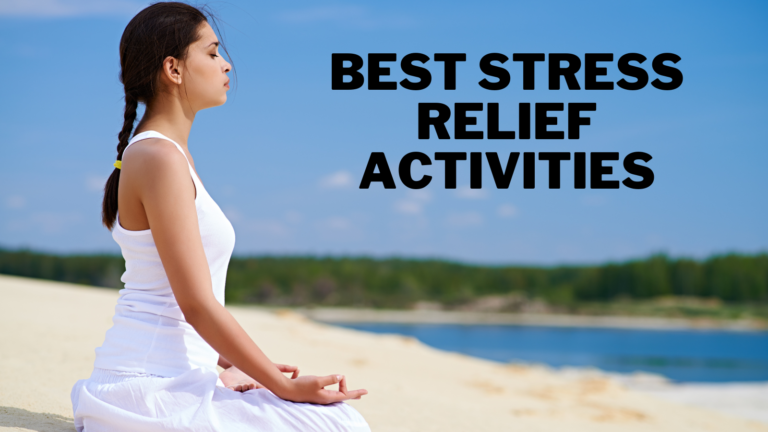Best Stress Relief Activities For Kids
Best Stress Relief Activities For Kids
Stress management aims to help children develop resilience, lifelong healthy behaviours, and cope with negative emotions.
By participating in entertaining and distinctive stress-relieving activities, kids might discover new avenues for self-expression, social interaction, and confidence development.
In this article, we'll look at some innovative stress-relieving activities for kids beyond tried-and-true strategies like exercise and mindfulness.
These activities give kids fresh approaches to stress management and emotional resilience development.
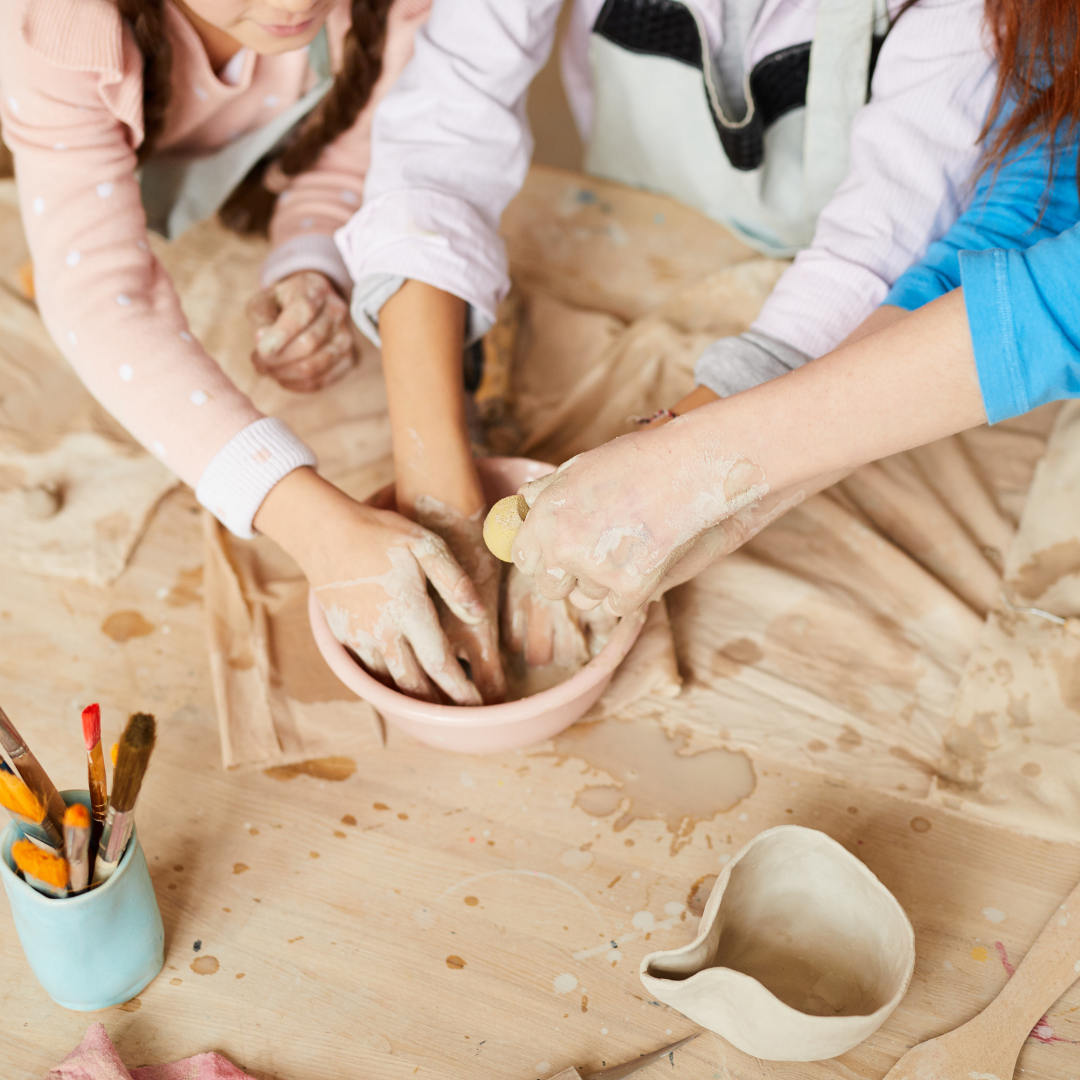
Why Are Stress Relief Activities Important For Kids?
Stress relief activities are important for kids for several reasons:
1. Improve Physical And Mental Health
Stress can negatively affect children's physical and mental health, such as headaches, stomachaches, anxiety, and depression.
Children can reduce these negative effects and improve their well-being by engaging in stress-relief activities.
2. Manage Emotions And Improve Academic Performance
Stress can impact children's ability to learn and perform well in school. Children may have difficulty concentrating, remembering information, and completing tasks when stressed.
Children can better manage their emotions and improve their academic performance by learning stress relief techniques.

3. Help Develop Life Skills
Finally, stress relief activities can help children develop important life skills, such as problem-solving, communication, and self-care, that will benefit them throughout their lives.
4. Promote Healthy Social And Emotional Development
In addition to the aforementioned reasons, stress relief activities are crucial for promoting children's healthy social and emotional development.
When children learn to manage their stress healthily, they can better regulate their emotions, communicate their needs effectively, and form positive relationships with others. This, in turn, can lead to increased self-esteem, confidence, and a greater sense of well-being.
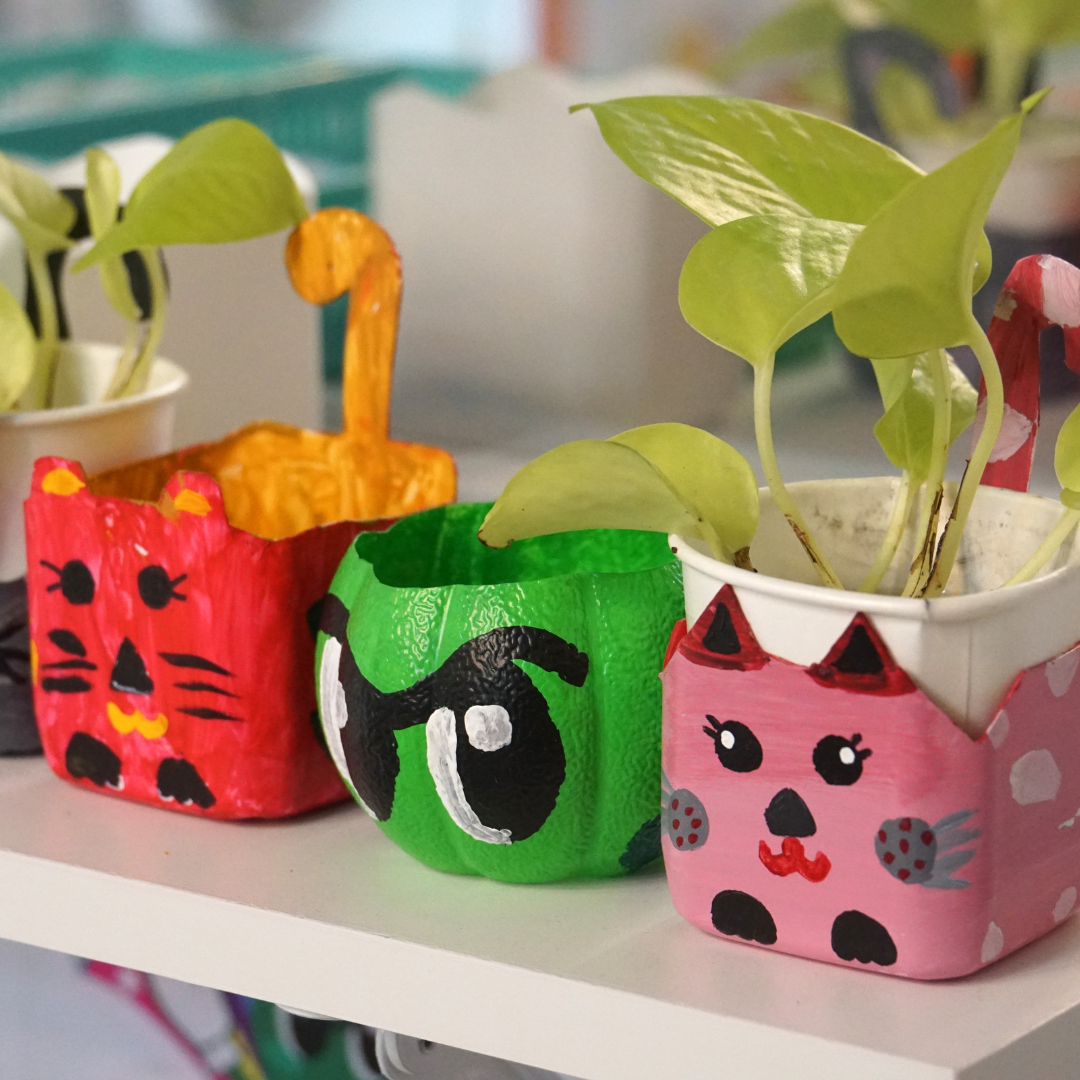
5. Provide An Outlet For Creativity
Furthermore, stress relief activities provide children with an outlet for creativity. Stress relief activities can be a way for children to connect with others and build positive relationships.
6. Create Opportunities For Socializing And Connecting
Whether participating in a team sport, playing a game with friends, or engaging in a group meditation session, stress relief activities can provide opportunities for socialization and connection.

Best Stress Relief Activities For Kids
Childhood can be a time of great joy and wonder, but it can also be a time of stress and anxiety.
Children, from school pressures to family conflicts, face many stressors affecting their mental and emotional well-being.
Fortunately, many stress relief activities can help kids relax, unwind, and build resilience. Some examples of unique stress relief activities for kids include:
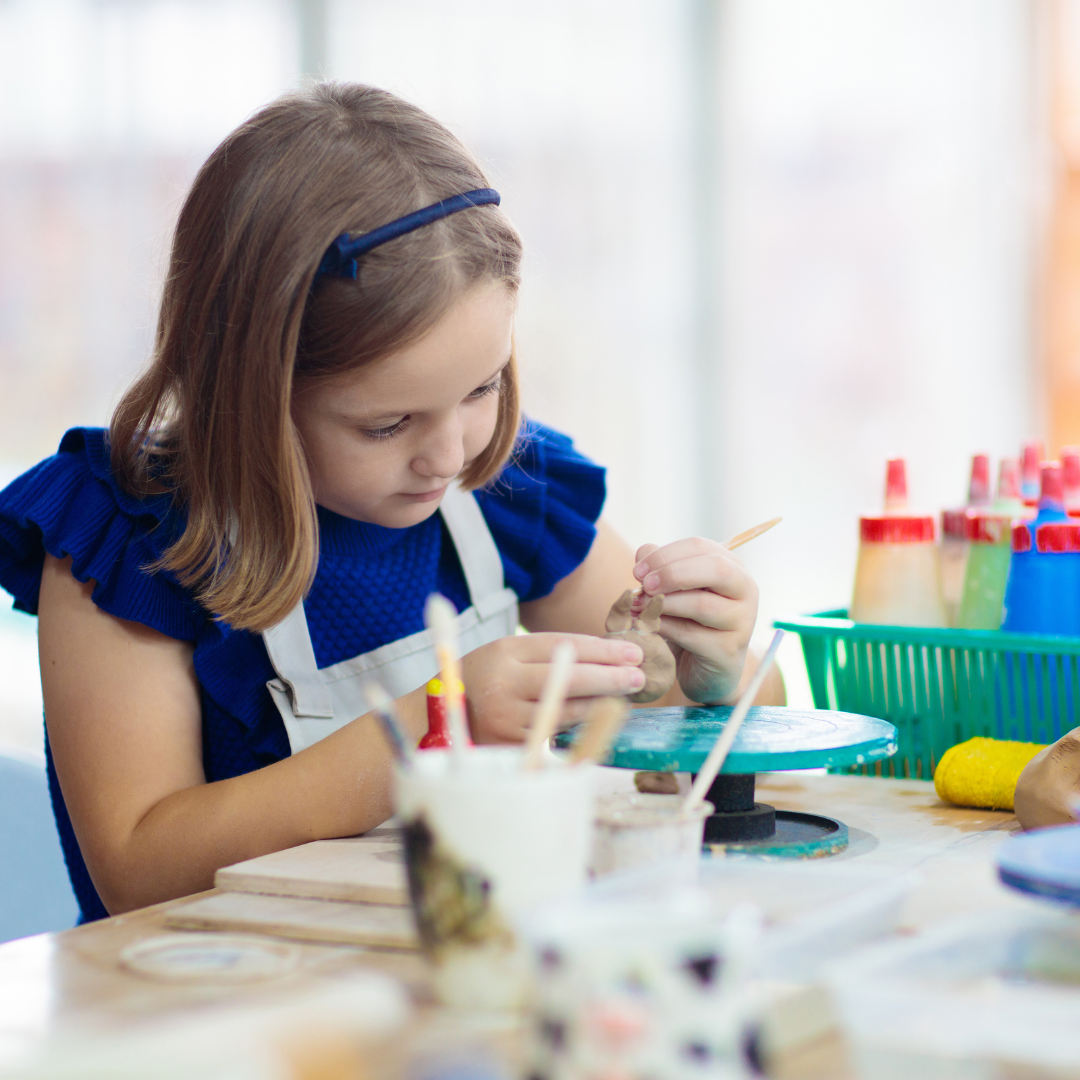
1. Art Therapy
Art therapy is a therapeutic approach that uses art materials and creative expression to help individuals, including children, explore their emotions, thoughts, and behaviours.
In art therapy sessions, a trained therapist provides a safe and supportive environment for children to create artwork that reflects their inner experiences.
By using art as a medium for self-expression, children can gain insight into their feelings, identify behaviour patterns, and develop coping strategies for dealing with stress and anxiety.
Art therapy can take many forms, from painting, drawing, sculpting, and collage. The type of art materials used depends on the child's preferences and the goals of the therapy session.
For example, a child feeling overwhelmed by anger may benefit from using bold and intense colours in their artwork, while a child feeling sad or anxious may prefer softer and more subdued colours.
One of the benefits of art therapy is that it allows children to express themselves in a non-verbal way. Art can provide a powerful means of communication for children who struggle to put their feelings into words.
Creating artwork can also be calming and centring, allowing children to focus their attention and release tension and stress.
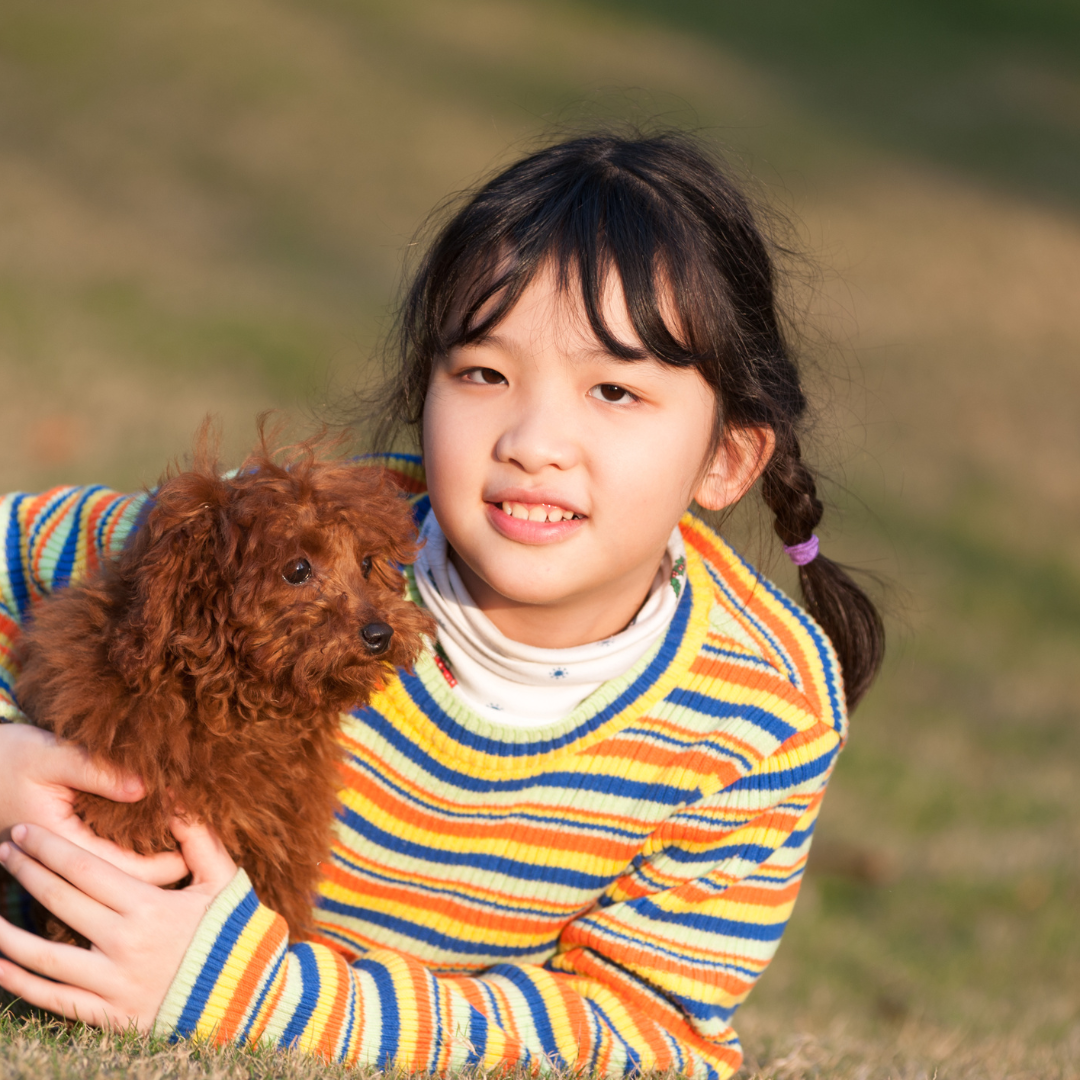
2. Animal Therapy
Animal therapy, also known as pet therapy or animal-assisted therapy, involves spending time with animals to promote emotional, physical, and social well-being.
Animal therapy can take many forms, from playing with dogs or cats to interacting with horses or other farm animals.
Animal therapy can be particularly beneficial for children, as it can help them develop social skills, build empathy, and reduce feelings of anxiety or stress.
Children who have experienced trauma or struggle with social anxiety may find it easier to connect with animals than with people and may benefit from a therapy animal's non-judgmental and accepting presence.
There are many different types of animal therapy, each with its benefits and goals. For example, equine therapy involves working with horses to build confidence and trust, while canine therapy involves spending time with dogs to reduce anxiety and promote relaxation.
Other types of animal therapy may involve caring for animals, such as feeding and grooming, or participating in animal-assisted activities, such as playing games or doing crafts with animals.
Animal therapy can be provided in various settings, including hospitals, schools, and therapy centers.
Trained therapists and animal handlers work together to ensure that the animals are well-cared for and that the therapy sessions are safe and effective.
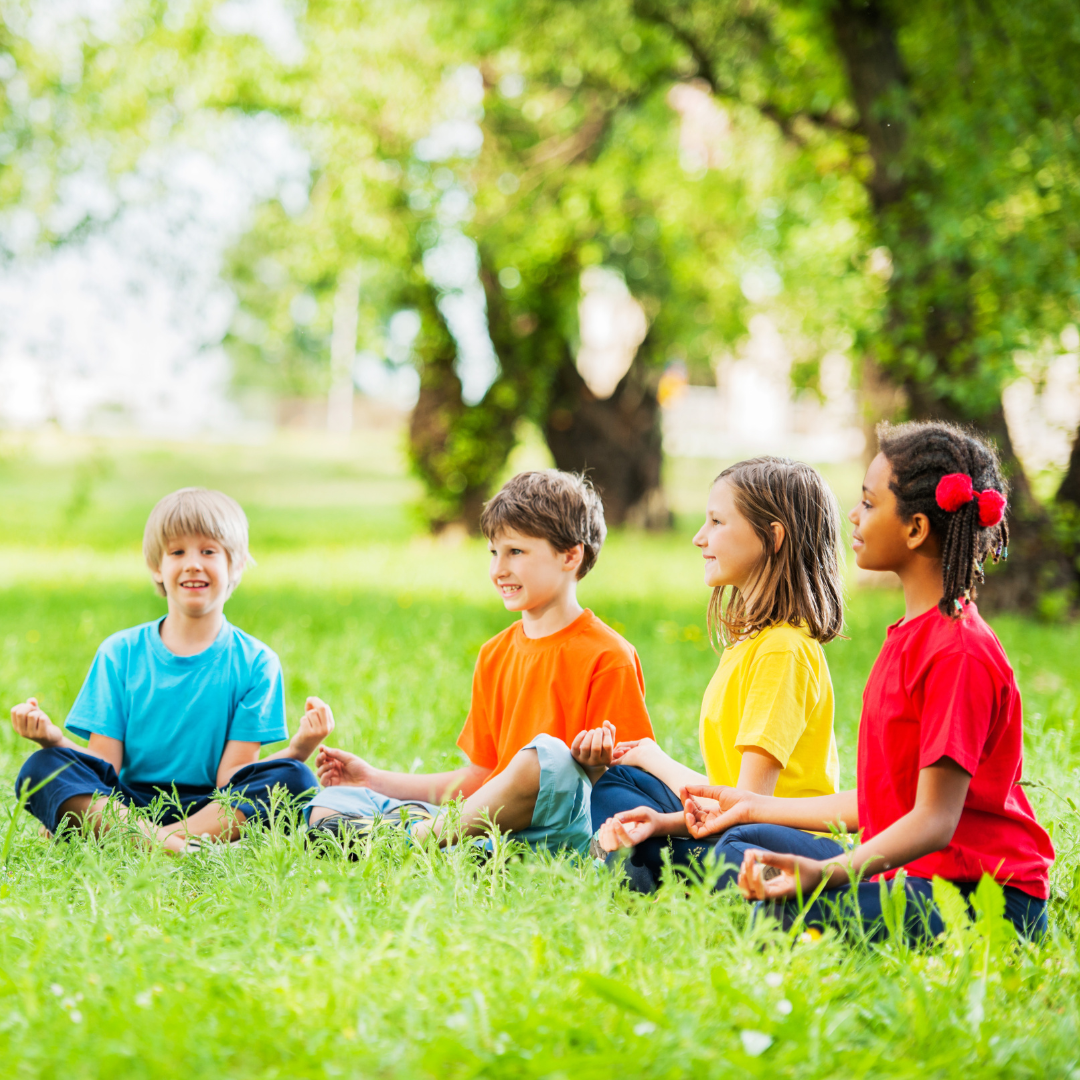
3. Breathing Exercises
Breathing exercises are a simple yet effective way for children to reduce stress and anxiety, promote relaxation, and improve their overall well-being.
Deep breathing exercises can help children slow their breathing rate, increase oxygen flow to the brain, and activate the parasympathetic nervous system, which is responsible for calming the body's stress response.
To practice deep breathing exercises, encourage your child to sit or lie comfortably and take slow, deep breaths in through the nose and out through the mouth.
Ask them to focus on their breath as they inhale and exhale and to imagine their breath filling their lungs with fresh air and releasing tension and stress with each exhale.
Children can try many different breathing exercises, from simple belly breathing to more complex techniques like alternate nostril or square breathing.
The key is finding a method that works for your child and encouraging them to practice it regularly, either independently or with your guidance.
Breathing exercises can be particularly helpful for children who struggle with anxiety or have difficulty managing their emotions.
By learning to regulate their breathing, children can develop a sense of control over their body and their feelings, which can help them feel more confident and resilient in the face of stress and adversity.

4. Dancing
Dancing is a fun and engaging way for children to reduce stress, express themselves creatively, and improve their physical and mental health.
Dancing can be a great way to release pent-up energy and tension and to channel emotions positively and productively.
Encouraging your child to dance can be as simple as turning on music and inviting them to move their body in whatever feels good.
You can also sign your child up for a dance class or program, providing a structured and supportive environment to explore their creativity and develop their skills.
In addition to its stress-relieving benefits, dancing can positively impact your child's physical health.
Dancing is a great way to improve cardiovascular health, build strength and flexibility, and develop coordination and balance.
Dancing can also help children build self-confidence and self-esteem as they learn new skills and create a sense of mastery over their bodies.
Children can explore many different types of dance, from ballet and tap to hip-hop and jazz. The key is finding a style that resonates with your child and encouraging them to pursue it enthusiastically and passionately.

5. Sensory Play
Sensory play is a fun and engaging way for children to explore and engage with the world around them.
Sensory play involves engaging in activities that stimulate the senses, such as touch, sight, sound, smell, and taste.
Sensory play can be a calming and therapeutic way for children to reduce stress and anxiety, improve focus and attention, and develop their sensory awareness and cognitive skills.
Children can try many sensory play activities, from playing with play dough and kinetic sand to exploring textures and colours with sensory bins or water play.
The key is to provide a safe and stimulating environment for your child to explore their senses and to encourage them to engage in sensory play regularly.
Sensory play can be particularly helpful for children with sensory processing issues or who struggle with attention and focus.
Children can learn to regulate their sensory experiences by engaging in sensory play activities and developing greater awareness of their bodies and environment.
In addition to its stress-relieving benefits, sensory play can help children develop important cognitive and social skills.
Sensory play can help children learn about cause and effect, develop fine motor skills, and enhance their problem-solving and creative thinking abilities.
Sensory play can also be a fun and engaging way for children to connect with others and develop social skills, such as cooperation and communication.

6. Journaling
Journaling is a powerful tool for self-reflection and self-expression. It can help children reduce stress and anxiety, improve their emotional regulation, and develop a deeper understanding of themselves and their experiences.
By encouraging your child to spend some time each day writing down their thoughts and feelings in a journal or notebook, you can help them develop a regular habit of self-reflection and introspection that can have long-lasting benefits for their mental and emotional health.
Journaling can take many forms, depending on your child's age, interests, and abilities. Some children may enjoy writing stories or poems, while others prefer to draw pictures or make collages. Encourage your child to express themselves in a way that is genuine and significant to them.
Journaling can also be a helpful tool for managing stress and anxiety. Children can gain perspective and clarity by writing down their worries and concerns in a journal to help them feel more grounded and centred.
Journaling can also help children identify patterns in their thoughts and behaviours, which can help develop strategies for coping with difficult emotions.
In addition to its stress-relieving benefits, journaling can help children develop important language and literacy skills.
By writing regularly, children can improve their vocabulary, grammar, and writing skills and develop a greater appreciation for the power of language and storytelling.

7. Cooking And Baking
Cooking or baking is an enjoyable and productive activity that can help children reduce stress and improve their well-being.
By involving your child in meal preparation, you can help them develop important life skills, such as following directions, measuring ingredients, and practicing patience and perseverance.
Cooking and baking also offer a creative outlet for children, allowing them to experiment with new recipes and ingredients and explore their sense of taste and flavour.
This can be particularly beneficial for children who may feel stressed or overwhelmed by other aspects of their lives, giving them a sense of control and accomplishment.
In addition to its stress-relieving benefits, cooking and baking can be a valuable opportunity for children to bond with family members and friends.
By working together in the kitchen, children can develop important social and communication skills and a sense of teamwork and cooperation.
Finally, cooking and baking can help children appreciate healthy eating habits and nutrition better.
By involving them in meal preparation, you can help your child learn the importance of eating a balanced and nutritious diet and develop a lifelong love of cooking and food.
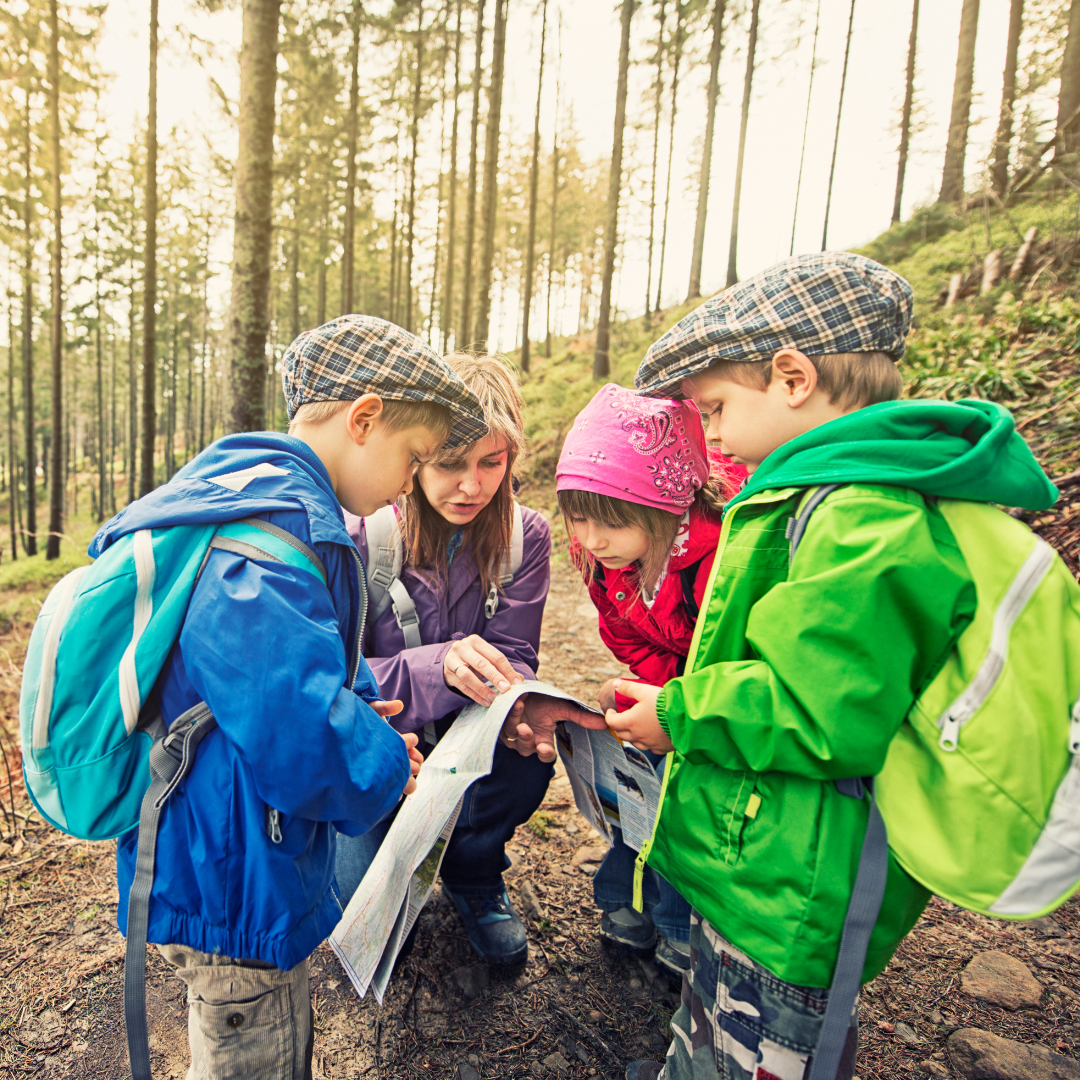
8. Hiking Or Nature Walks
Hiking or nature walks offer a wonderful opportunity for children to connect with the outdoors and reduce stress.
Spending time in nature has been shown to have numerous mental and physical health benefits, including reducing stress, improving mood, and boosting cognitive function.
Hiking or nature walks can be an exciting and educational activity for children, allowing them to explore new environments, observe and learn about different plants and animals, and develop a greater appreciation for the natural world.
This can be particularly beneficial for children who may spend a lot of time indoors or in front of screens, as it allows them to disconnect from technology and connect with the world around them.
In addition to its stress-relieving benefits, hiking and nature walks can also help children develop important physical and social skills.
Walking on uneven terrain and navigating obstacles can help improve balance and coordination, while hiking in groups can foster teamwork, communication, and problem-solving skills.
When planning a hike or nature walk with your child, choose a trail or location appropriate for their age and skill level, and pack plenty of water and snacks.
Encourage your child to take breaks as needed and to stop and observe the natural world around them.
And remember to bring a camera or sketchbook to capture any interesting sights or experiences along the way.

9. Puzzles And Games
Puzzles and games can be a great way for children to take a break from stress and engage in a fun and challenging activity.
Completing puzzles or playing games can help children improve their problem-solving skills, boost their cognitive function, and enhance their mood.
When choosing puzzles or games for your child, select age-appropriate ones that align with their interests and abilities.
Simple jigsaw puzzles or memory games can be a good choice for younger children, while older children may enjoy more complex strategy games or crossword puzzles.
Playing games or completing puzzles with others can also be a great way for children to build social skills and connect with others.
Encourage your child to invite friends or family to join the fun or consider participating in a puzzle or game night with other families.
In addition to their cognitive and social benefits, puzzles and games can help children develop patience, perseverance, and a sense of accomplishment.
As your child works to complete a puzzle or game, they will learn to persist through challenges and celebrate their successes, building their confidence and self-esteem.
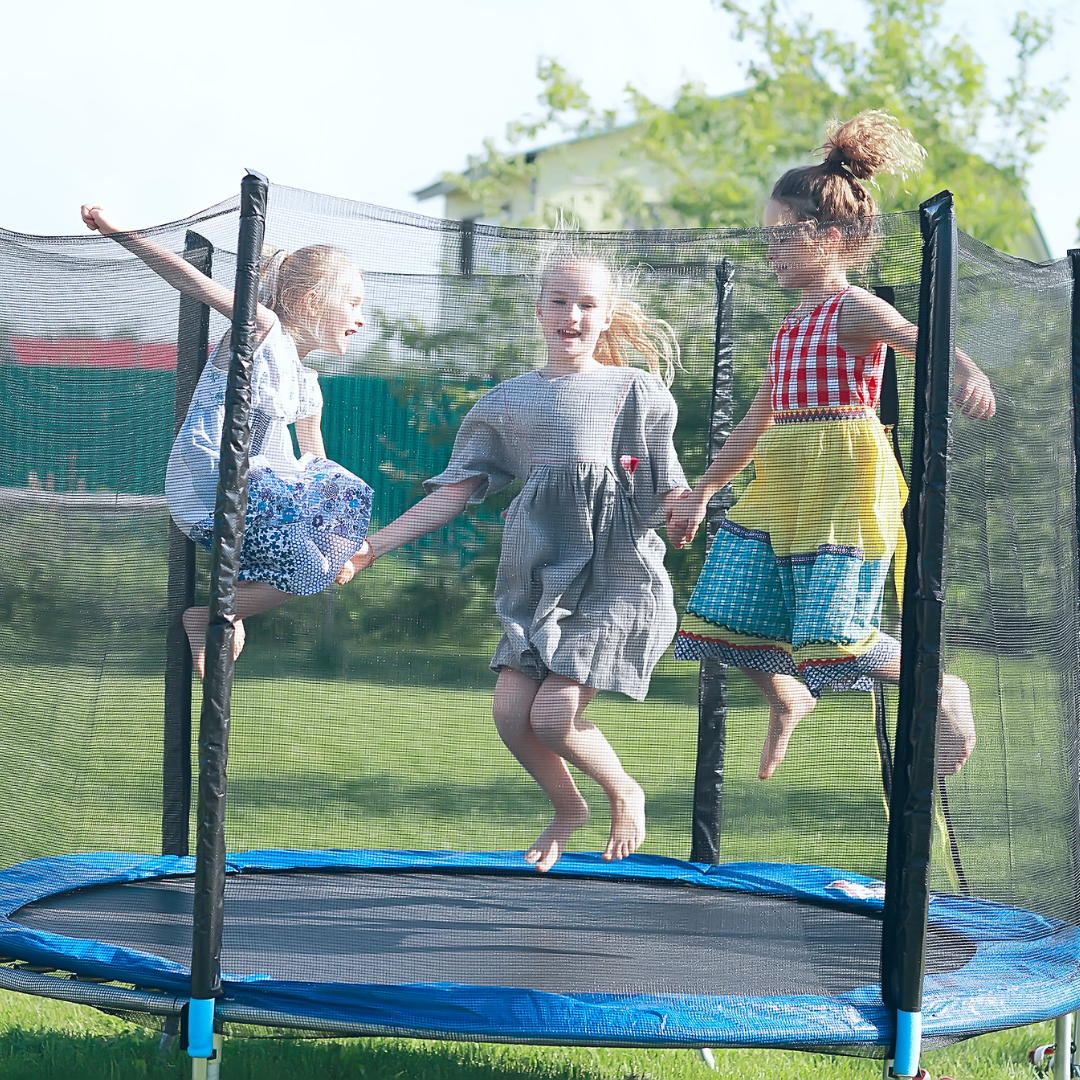
10. Jumping On A Trampoline
Jumping on a trampoline is a popular activity among children that can provide numerous physical and mental health benefits. It is a fun and energetic way to release pent-up energy and can help reduce stress and anxiety.
Jumping on a trampoline can provide a full-body workout and help children improve their balance, coordination, and cardiovascular health.
It can also stimulate the lymphatic system, which helps remove toxins from the body and boost the immune system.
In addition to its physical benefits, jumping on a trampoline can help children reduce stress and improve their mood.
The repetitive bouncing motion can be calming and therapeutic, relaxing and releasing feel-good endorphins in the brain.
To ensure your child's safety while jumping on a trampoline, supervise them at all times and follow all safety guidelines.
Encourage your child to jump in a safe and controlled manner, avoiding dangerous stunts or jumping too high.
Consider investing in a trampoline with safety features, such as a net enclosure or padded frame.
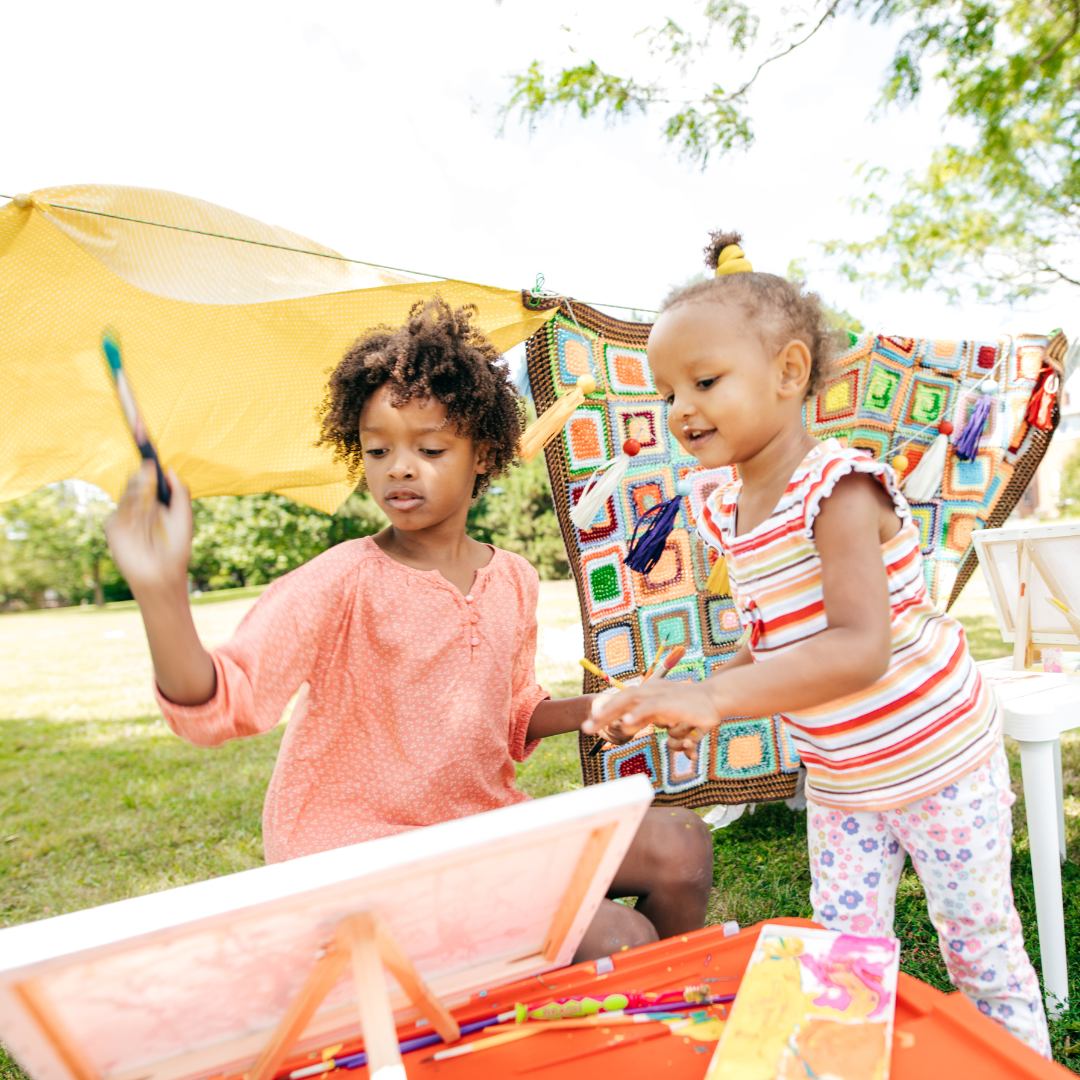
Conclusion
In conclusion, stress relief activities can be a helpful tool for children to manage their emotions and improve their overall well-being.
From art therapy and animal therapy to breathing exercises and hiking, there are numerous activities that children can engage in to reduce stress and promote relaxation.
These activities can help children develop coping skills, build emotional resilience, and improve their ability to manage stress in the future.
Encouraging children to engage in these activities regularly can help them maintain a healthy balance between school, home, and other responsibilities.
Remember, each child is unique, and finding activities that work best for them is essential. Parents and caregivers can help children find effective stress-relief activities that work for them by providing various options and supporting their interests and abilities.
Overall, stress relief activities can be a valuable tool in promoting the health and well-being of children.
I trust you enjoyed this article about Stress Relief Activities For Kids. Please stay tuned for more blog posts to come shortly. Take care!
JeannetteZ
>>>Please click here to read my all-inclusive article about Lessons That Will Teach You All About Stress<<<
>>>Are you interested in Natural Healing And Stress Relief through Herbs? Please click here for my #1 Recommendation<<<
Your Opinion Is Important To Me
Thoughts? Ideas? Questions? I would love to hear from you. Please leave me your questions, experiences and remarks about the Stress Relief Activities For Kids in the comments section below. You can also reach me by email at Jeannette@Close-To-Nature.org.
Disclosure
This post may contain affiliate links. I earn from qualifying purchases as an Amazon Associate and other affiliate programs. Please read my full affiliate disclosure.
You might also enjoy these blog posts:
Stress Relief Activities For Students
Top Relaxation Techniques For Daily Life
Stress Management Everything You Need To Know
How Stress Affects Your Health






